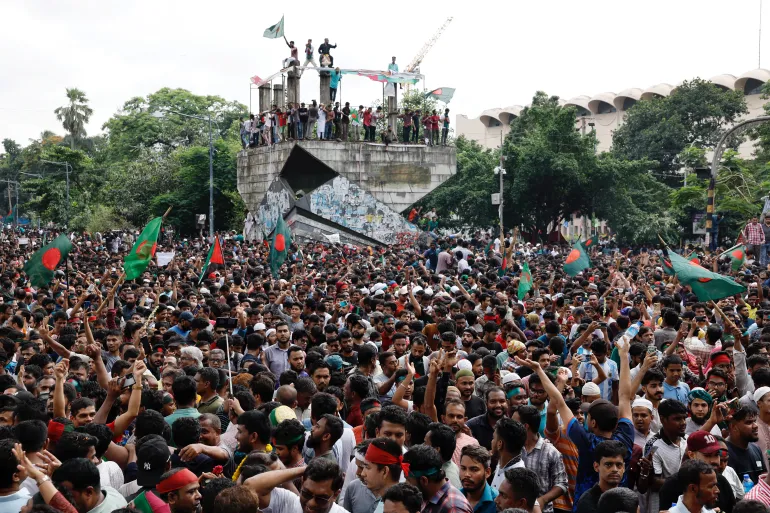Key Points
- U.S. Military Action: On June 21, 2025, the U.S. conducted strikes on three Iranian nuclear facilities—Fordow, Natanz, and Isfahan—using B-2 bombers and Tomahawk missiles, causing significant damage.
- Trump’s Claims: President Trump claimed the strikes inflicted “monumental damage,” though experts suggest Iran’s nuclear program may persist due to preemptive uranium relocation.
- Iran’s Response: Iran retaliated with missile strikes on Israel, damaging Tel Aviv, and is considering further actions, including targeting U.S. bases or closing the Strait of Hormuz.
- Global Reactions: The UN, Russia, and China have called for restraint, warning of regional instability, while oil prices surged due to fears of disrupted supply.
- Controversy: Trump’s mention of regime change has sparked debate, with his administration clarifying no such policy exists, highlighting tensions between rhetoric and official stance.
U.S. Strikes on Iran’s Nuclear Sites
On June 21, 2025, the United States launched a significant military operation, dubbed “Operation Midnight Hammer,” targeting Iran’s nuclear facilities at Fordow, Natanz, and Isfahan. President Donald Trump claimed the strikes caused “monumental damage,” asserting a major blow to Iran’s nuclear ambitions. Iran has vowed to retaliate, launching missiles at Israel and weighing further actions, while global leaders urge de-escalation amid rising oil prices and fears of broader conflict.
Damage Assessment
Satellite imagery and expert analyses indicate severe damage to Iran’s nuclear sites, particularly Fordow’s underground enrichment facility and Isfahan’s uranium conversion complex. However, reports suggest Iran may have moved enriched uranium beforehand, potentially preserving its nuclear capabilities. The International Atomic Energy Agency (IAEA) reported no off-site radiation increases, but the full extent of underground damage remains unclear.
Iran’s Retaliation
Iran responded with missile strikes on Israel, causing casualties and damage in Tel Aviv. Iran’s UN ambassador, Amir Saeid Iravani, condemned the U.S. actions as “waging war” and accused Israel of sabotaging diplomacy. While Iran has not yet targeted U.S. bases or closed the Strait of Hormuz, its parliament has approved the latter, pending Supreme National Security Council approval, raising concerns about global oil supply disruptions.
Trump’s Rhetoric
President Trump’s Truth Social post on June 22, 2025, described the strikes as achieving “monumental damage” and praised the U.S. military’s precision (Trump’s Post). He also suggested regime change in Iran, stating, “If the current Iranian Regime is unable to MAKE IRAN GREAT AGAIN, why wouldn’t there be a Regime change???” This contrasts with statements from Vice President JD Vance and Defense Secretary Pete Hegseth, who emphasized no intent to overthrow Iran’s government, highlighting a potential disconnect in messaging.
Global and Economic Impact
The strikes have heightened global tensions, with the UN Security Council meeting urgently on June 22, 2025, to propose a ceasefire. Russia condemned the U.S. actions, warning of regional escalation, while Iran’s Foreign Minister Abbas Araqchi met with Russian President Vladimir Putin to discuss responses. Oil prices surged, with Brent crude rising 2.44% to $78.89 and WTI up 2.53% to $75.71, reflecting fears of Strait of Hormuz disruptions (Reuters Oil Impact).
Escalation in the Middle East: U.S. Strikes on Iran’s Nuclear Program
Introduction
The U.S. military strikes on Iran’s nuclear facilities on June 21, 2025, have thrust the Middle East into a precarious new phase of conflict. Ordered by President Donald Trump, the operation targeted three key sites—Fordow, Natanz, and Isfahan—in what the U.S. described as a response to Iran’s stalled nuclear negotiations. Iran’s retaliatory missile strikes on Israel and threats of further action have raised global alarm, with oil markets reacting and international calls for diplomacy intensifying. This report examines the strikes, their impact, Iran’s response, and the broader implications.
Background: A History of Tensions
Iran’s Nuclear Program
Iran’s nuclear ambitions have been a global concern for decades. While Tehran insists its program is for peaceful purposes, its uranium enrichment activities have fueled suspicions of weaponization. The U.S. and allies have pushed for Iran to forgo enrichment, offering support for civilian nuclear energy, a proposal Iran has consistently rejected (BBC Overview).
Failed Diplomacy
Prior to the strikes, U.S. envoy Steve Witkoff engaged in global diplomatic efforts to secure a deal, but Iran’s indirect messaging and a 10-day silence frustrated negotiations, according to Secretary of State Marco Rubio. Iran’s refusal to abandon enrichment, coupled with accusations of Israel sabotaging talks, prompted Trump’s decision to act (Reuters Retaliation).
The U.S. Strikes: Operation Midnight Hammer
Execution
On June 21, 2025, at approximately 6:40 p.m. ET (2:10 a.m. Sunday in Iran), the U.S. launched “Operation Midnight Hammer,” deploying seven B-2 Spirit bombers, over 125 aircraft, and 75 precision-guided munitions, including Massive Ordnance Penetrators and Tomahawk missiles. The targets were:
- Fordow: A deeply buried enrichment facility, hit with 12 bunker-buster bombs, resulting in six deep craters and significant debris.
- Natanz: An underground centrifuge site, struck by two bunker-busters.
- Isfahan: A uranium conversion complex, targeted with cruise missiles, with three of four tunnel entrances collapsed (CNN Strike Details).
Damage Assessment
Satellite imagery from Maxar Technologies and Airbus Space and Defense shows severe structural damage, particularly at Fordow and Isfahan (NPR Satellite Analysis). However, experts like Jeffrey Lewis and David Albright note that Iran likely moved over 400 kg of 60% enriched uranium—enough for approximately 10 bombs—before the strikes, suggesting the nuclear program may persist in covert facilities. The IAEA reported no off-site radiation increases, but underground damage assessments are ongoing.
| Site | Damage Reported | Uranium Status |
|---|---|---|
| Fordow | Six deep craters, significant structural damage | Most enriched uranium reportedly moved |
| Natanz | Underground centrifuge facility hit | Possible uranium relocation |
| Isfahan | Main uranium conversion facility heavily damaged | Tunnel entrances collapsed |
Iran’s Response and Retaliation
Missile Strikes on Israel
On June 22, 2025, Iran launched a volley of missiles at Israel, targeting Tel Aviv’s metropolitan area, wounding scores and destroying buildings. Iranian air defenses were activated in Tehran to counter reported Israeli strikes on Parchin, a military complex southeast of the capital (Reuters Retaliation).
Potential Further Actions
Iran’s UN ambassador, Amir Saeid Iravani, condemned the U.S. strikes as “waging war” under a “fabricated pretext” and accused Israel of undermining diplomacy. Iran has reserved its right to self-defense, with its armed forces deciding the “timing, nature, and scale” of further responses. The Iranian parliament approved closing the Strait of Hormuz, a move requiring Supreme National Security Council approval, which could disrupt 20% of global oil supply (Reuters Oil Impact).
Trump’s Claims and Regime Change Rhetoric
“Monumental Damage”
President Trump claimed on Truth Social that the strikes caused “monumental damage” to Iran’s nuclear sites, describing the hits as “hard and accurate” (Trump’s Post). He praised the U.S. military’s skill and warned Iran against retaliation, suggesting future attacks could be more severe. However, expert analyses indicate that while infrastructure was heavily damaged, Iran’s nuclear program may not be fully neutralized due to preemptive uranium relocation.
Regime Change Controversy
Trump’s Truth Social post on June 22, 2025, raised the prospect of regime change, stating, “If the current Iranian Regime is unable to MAKE IRAN GREAT AGAIN, why wouldn’t there be a Regime change???” (White House Post). This rhetoric contrasts with statements from Vice President JD Vance and Defense Secretary Pete Hegseth, who clarified that the administration is not pursuing regime change, focusing instead on eliminating Iran’s nuclear weapons capability (CNN Strike Details).
Global and Economic Repercussions
International Reactions
The UN Security Council met on June 22, 2025, with Russia, China, and Pakistan proposing a ceasefire resolution. UN Secretary-General António Guterres called the strikes a “dangerous escalation,” urging a return to nuclear negotiations (UN Statement). Russia condemned the U.S. actions as undermining the Non-Proliferation Treaty, while Iran’s Foreign Minister Abbas Araqchi met with Vladimir Putin in Moscow to discuss responses, reflecting Russia’s strategic ties with Iran (Reuters UN Meeting).
Economic Impact
Fears of Iran closing the Strait of Hormuz drove oil prices higher on June 23, 2025. Brent crude rose 2.44% to $78.89 per barrel, and WTI increased 2.53% to $75.71, reflecting a supply risk premium (Reuters Oil Impact). Such a closure could disrupt global oil markets and invite confrontation with the U.S. Navy’s Fifth Fleet.
| Commodity | Price Change | New Price | Date |
|---|---|---|---|
| Brent Crude | +$1.88 (2.44%) | $78.89 | June 23, 2025 |
| WTI Crude | +$1.87 (2.53%) | $75.71 | June 23, 2025 |
U.S. Policy and Domestic Context
Administration’s Stance
The Trump administration insists it is not at war with Iran, focusing on targeted strikes to halt nuclear weaponization. Vice President Vance emphasized no interest in “boots on the ground,” while Secretary Rubio called for direct negotiations, offering Iran a civilian nuclear program without enrichment (CNN Strike Details). The U.S. has increased troop protection in Iraq and Syria and issued a global security alert for citizens (Reuters Retaliation).
Domestic Reactions
Progressive Democrats have called for impeachment, citing Trump’s lack of congressional approval for the strikes, while supporters argue the action was necessary to prevent leaks (Fox News Post). The Department of Justice claims the strikes fall under Article II powers, though prolonged conflict may require congressional authorization.
Looking Ahead
Iran’s Next Steps
Iran’s response remains uncertain, with the Supreme Leader’s decision critical. Potential actions include targeting U.S. interests or closing the Strait of Hormuz, though the latter risks severe economic and military consequences. Iran’s ability to reconstitute its nuclear program using covert facilities and unused centrifuges poses a long-term challenge (NPR Satellite Analysis).
Path to Diplomacy
The U.S. and allies, including European nations, continue to push for direct talks. Rubio’s offer for Iran to pursue civilian nuclear energy without enrichment remains open, but Iran’s rejection of this condition complicates negotiations. Increased IAEA inspections and a diplomatic agreement are seen as essential to prevent further escalation.
The U.S. strikes on Iran’s nuclear facilities have significantly altered the Middle East’s geopolitical landscape, with “monumental damage” to infrastructure but uncertainty about Iran’s nuclear capabilities. Iran’s missile strikes on Israel and potential for further retaliation, combined with Trump’s regime change rhetoric, heighten the risk of broader conflict. Global calls for restraint and diplomacy offer a path forward, but the next 24-48 hours will be critical in determining whether de-escalation is possible.
Key Citations
- Trump claims US obliterated Iran’s nuclear sites
- Satellite imagery shows damage to Iran’s nuclear program
- Iran weighs retaliation against U.S. for nuclear strikes
- UN chief alarmed by U.S. bombing of Iran
- Oil prices rise after U.S. strikes on Iran
- Trump’s Truth Social post on Iran nuclear damage
- White House echoes Trump’s nuclear damage claim
- Fox News on impeachment calls post-Iran strikes
- What we know about US strikes on Iran




